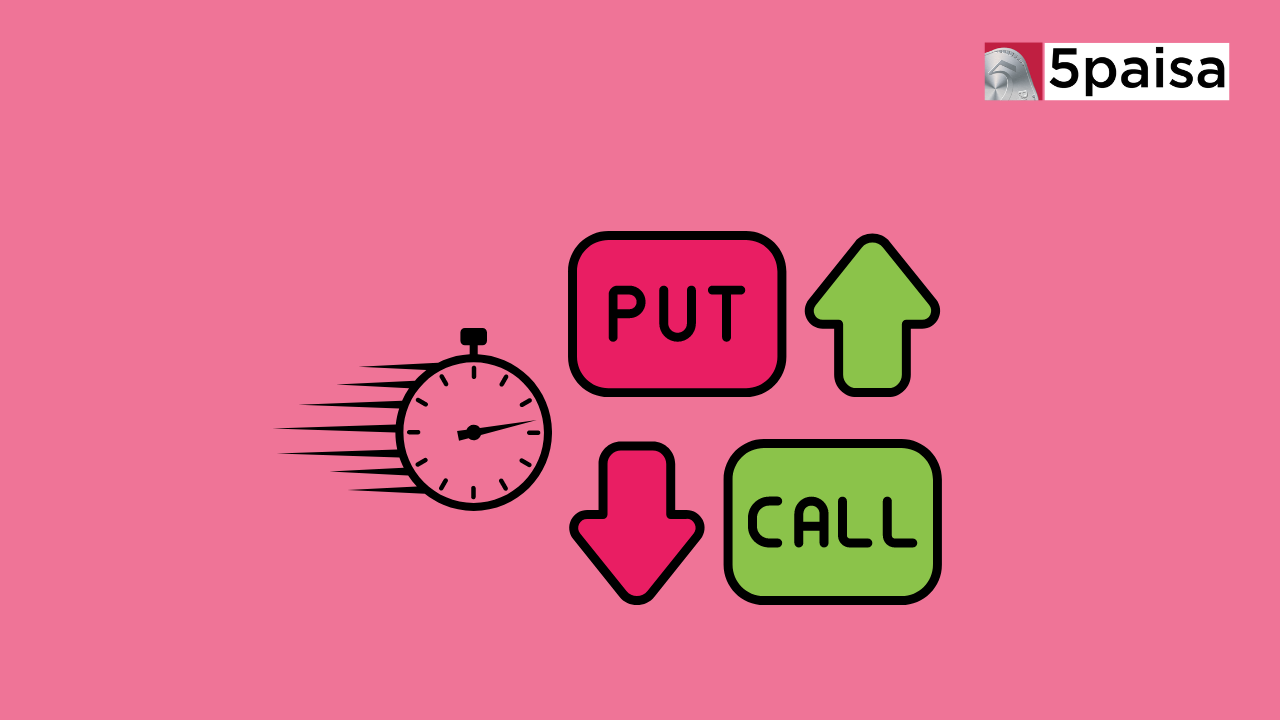Short Iron Butterfly Options Strategy

Last Updated: 10th December 2022 - 01:32 pm
A Short Iron Butterfly strategy is implemented when an investor is expecting very little or no movement in the underlying assets. The motive behind initiating this strategy is to rightly predict the stock price till expiration and gain from time value. It is a limited risk and a limited reward strategy, similar to Long Call Butterfly strategy. A Short Iron Butterfly could also be considered as a combination of Bear Call Spread and Bull Put Spread.
When to initiate a Short Iron Butterfly?
A Short Iron Butterfly spread is best to use when you expect the underlying assets to trade in a narrow range as this strategy benefits from time decay factor. Also, when the implied volatility of the underlying assets increases unexpectedly and you expect volatility to come down, then you can apply Short Iron Butterfly strategy.
How to construct a Short Iron Butterfly?
A Short Iron Butterfly can be created by selling 1 ATM call, buying 1 OTM call, selling 1 ATM put and buying 1 OTM put of the same underlying security with the same expiry. Strike price can be customized as per the convenience of the trader; however, the upper and lower strike must be equidistant from the middle strike.
|
Strategy |
Sell 1 ATM Call, Buy 1 OTM Call, Sell 1 ATM Put and Buy 1 OTM Put |
|
Market Outlook |
Neutral on market direction & Bearish on volatility |
|
Motive |
Earn from time value with limited risk |
|
Upper Breakeven |
Short Option (Middle) Strike price + Net Premium Received |
|
Lower Breakeven |
Short Option (Middle) Strike price - Net Premium Received |
|
Risk |
Limited |
|
Reward |
Limited to premium received |
|
Margin required |
Yes |
Let’s try to understand with an example:
|
Nifty Current spot price (Rs) |
9200 |
|
Sell 1 ATM Call of strike price (Rs) |
9200 |
|
Premium received (Rs) |
70 |
|
Buy 1 OTM Call of strike price (Rs) |
9300 |
|
Premium paid (Rs) |
30 |
|
Sell 1 ATM Put of strike price (Rs) |
9200 |
|
Premium received (Rs) |
105 |
|
Buy 1 OTM Put of strike price (Rs) |
9100 |
|
Premium paid (Rs) |
65 |
|
Upper breakeven |
9280 |
|
Lower breakeven |
9120 |
|
Lot Size |
75 |
|
Net Premium Received (Rs) |
80 |
Suppose Nifty is trading at 9200. An investor, Mr. A thinks that Nifty will not rise or fall much by expiration, so he enters a Short Iron Butterfly by selling a 9200 call strike price at Rs 70, buying 9300 call for Rs 30 and simultaneously selling 9200 put for Rs 105, buying 9100 put for Rs 65. The net premium received to initiate this trade is Rs 80, which is also the maximum possible gain. This strategy is initiated with a neutral view on Nifty hence it will give the maximum profit only when the underlying assets expire at middle strike. The maximum profit from the above example would be Rs 6,000 (80*75). The maximum loss will also be limited to Rs 1,500 (20*75), if it breaks the upper and lower break-even points. Another way by which this strategy can give profit is when there is a decrease in implied volatility.
For the ease of understanding, we did not take into account commission charges. Following is the payoff chart and payoff schedule assuming different scenarios of expiry.
The Payoff chart:

The Payoff Schedule:
|
On Expiry NIFTY closes at |
Net Payoff from 1 ITM Call Bought (Rs) 9200 |
Net Payoff from 1 OTM Call Sold (Rs) 9300 |
Net Payoff from 1 ATM Put bought (Rs) 9200 |
Net Payoff from 1 OTM Put sold (Rs.) 9100 |
Net Payoff (Rs) |
|
8800 |
70 |
-30 |
-295 |
235 |
-20 |
|
8900 |
70 |
-30 |
-195 |
135 |
-20 |
|
9000 |
70 |
-30 |
-95 |
35 |
-20 |
|
9100 |
70 |
-30 |
5 |
-65 |
-20 |
|
9120 |
70 |
-30 |
25 |
-65 |
0 |
|
9200 |
70 |
-30 |
105 |
-65 |
80 |
|
9280 |
-10 |
-30 |
105 |
-65 |
0 |
|
9300 |
-30 |
-30 |
105 |
-65 |
-20 |
|
9400 |
-130 |
70 |
105 |
-65 |
-20 |
|
9500 |
-230 |
170 |
105 |
-65 |
-20 |
|
9600 |
-330 |
270 |
105 |
-65 |
-20 |
Impact of Options Greeks before expiry:
Delta: The net delta of a Short Iron Butterfly spread remains close to zero if underlying assets remains at middle strike. Delta will move towards -1 if the underlying assets expire above the higher strike price and Delta will move towards 1 if the underlying assets expire below the lower strike price.
Vega: Short Iron Butterfly has a negative Vega. Therefore, one should initiate Short Iron Butterfly spread when the volatility is high and is expected to fall.
Theta: With the passage of time, if other factors remain the same, Theta will have a positive impact on the strategy.
Gamma: This strategy will have a short Gamma position, so the change in underline asset will have a negative impact on the strategy.
How to manage Risk?
A Short Iron Butterfly is exposed to limited risk compared to reward, so carrying overnight position is advisable.
Analysis of Short Iron Butterfly strategy:
A Short Iron Butterfly spread is best to use when you are confident that an underlying security will not move significantly and will stay in a range. Downside risk is limited to the net premium received, and upside reward is also limited but higher than the risk involved. It provides a good reward to risk ratio.
- Flat ₹20 Brokerage
- Next-gen Trading
- Advance Charting
- Actionable Ideas
Trending on 5paisa
Futures and Options Related Articles
Disclaimer: Investment in securities market are subject to market risks, read all the related documents carefully before investing. For detailed disclaimer please Click here.
 5paisa Research Team
5paisa Research Team
 Sachin Gupta
Sachin Gupta




